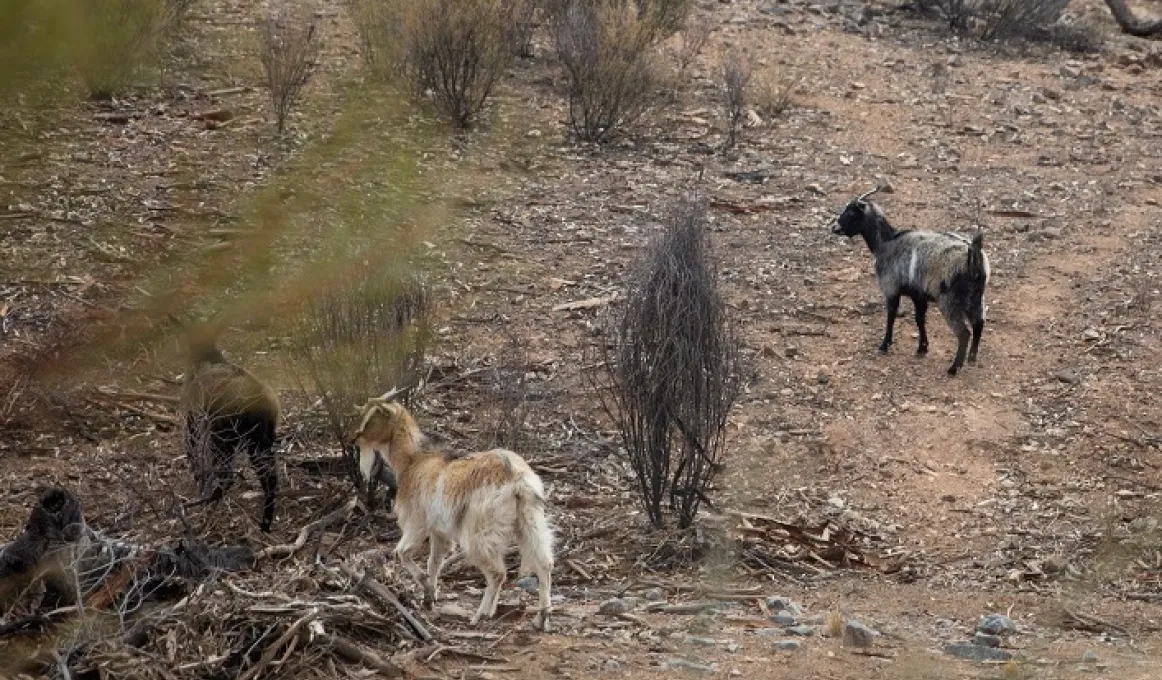Saving the natural heritage of Nantawarrina IPA from feral goats

Goats are eating everything on the Nantawarrina IPA in the Northern Flinders Ranges of South Australia but the rangers from the community of Nepabunna are fighting back.
Unlike native animals, goats eat everything and that’s what they are doing on Australia’s first Indigenous Protected Area (IPA), Nantawarrina.
The IPA in northern South Australia covers more than 58,000 hectares of Adnyamathanha ancestral land. It borders multiple pastoral leases and a national park and with no fence separating it, is subject to feral animal invasion on a scale few Australians would appreciate.
The goats are the main feral animal problem. They eat new Eucalypt seedlings which when grown to full height, preserve and bind the all-important top soil.
They eat the leaves off small trees, which when stripped clean, the tree dies.
The goats also eat the same vegetation that native animals on the IPA require for survival; animals such as the Yellow-footed Rock Wallaby (andu)* and the Emu (warratyi).
They eat the Bush tomatoes (humuru) and the Bush oranges (iga).
And they eat the Sturt desert pea (narapana) which in spring, on a well-watered soil, carpets the land in a bright red vision for both rangers and tourists alike.
So when tens of thousands of goats invade a land already under stress from prolonged drought, they must be eradicated.
According to Ranger Daniel Johnson, in the past two years, the Nantawarrina Rangers removed more than 9,000 goats from their IPA.
‘We muster the goats on our motor bikes and use two way radios to coordinate with each other and with the helicopter,’ Daniel said.
‘In the past, we would muster them all the way back to Nepabunna where they are held in a yard, but now we muster them to a transportable yard within the IPA and transport them back to Nepabunna by truck, 200 at a time.’
The size of the IPA means they concentrate on one area at a time, with 7 or 8 rangers spread a kilometre apart heading for a designated spot. That spot is a natural corral where the transportable yard has been erected.
When enough are collected, the goats are trucked to abattoirs in South Australia with 95% of the meat products exported to the USA.
Though the goats form an important source of revenue for the community of Nepabunna, when choosing between revenue and a thriving IPA, there is no choice.
The goats must go!
Find out more
For more information, see Australia’s Indigenous Protected Areas [PDF 1.3MB].
There were 5,065 goats removed from Nantawarrina IPA in 2017 and 4,375 in 2018.
*Traditional names of flora and fauna are in the Adnyamathanha language.